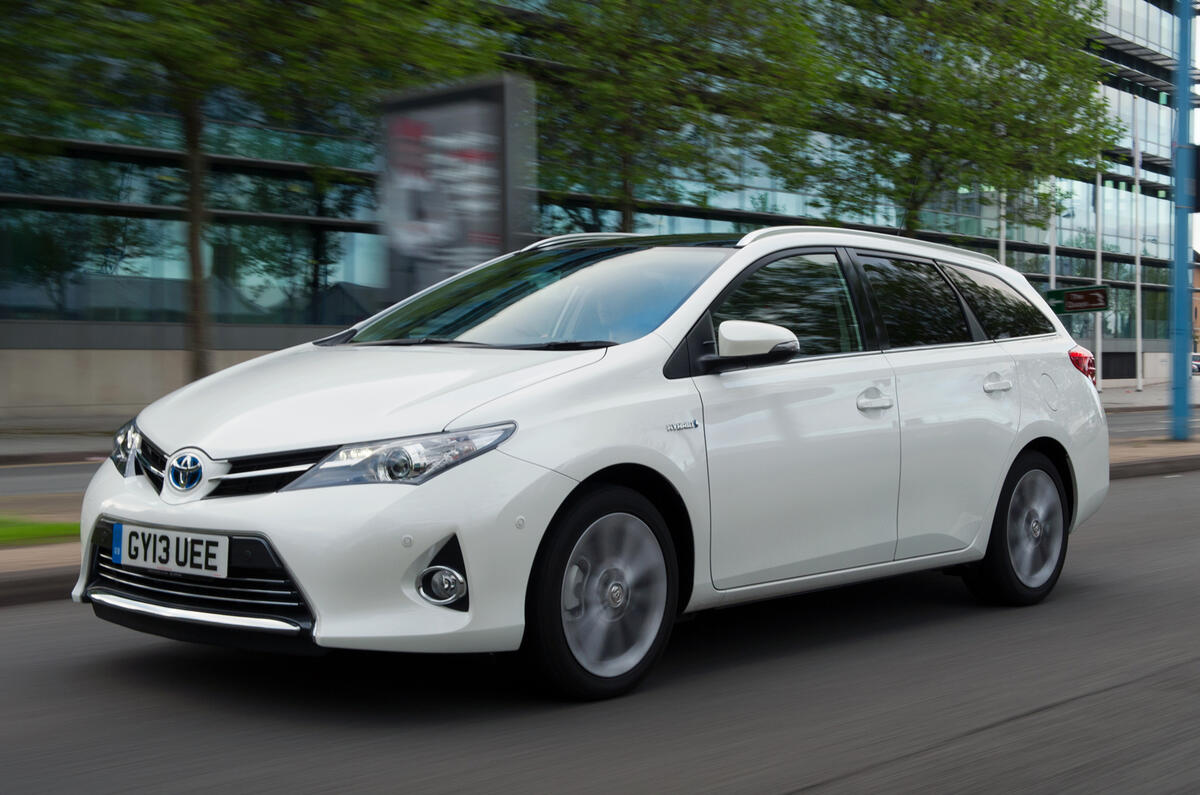What is it?
This is the Toyota Auris estate, although with a name like Touring Sports you might imagine something a little more glamorous and powerful. There’s a small but solid market for these traditional estates, with most sold to fleet buyers. In fact, Toyota reckons that more than 60 per cent of these more practical Aurises will be destined for company car parks.
Like the Auris hatch, the estate is a neat, contemporary-looking wagon with a pleasing hint of the rakish, whose most impressive feature is that the drivetrain and battery pack of the hybrid version is accommodated without compromising the car’s luggage carrying capacity. Which is quite a feat. Not only that, but its 1658-litre seats-down loadspace is also the best in the class.
The load bay is also well shaped and will – just – swallow objects two metres long, although you’ll be getting intimate with the steering wheel with something that large in the space behind you. The tailgate is yawningly big, the seats fold easily and the removable roll-out parcel shelf doubles as a divider between the front seats and the load space, so it’s certainly practical.
Besides the 1.8 hybrid there are 1.3 and 1.6-litre petrol engines and a 1.4 diesel. There are alos four trim levels, the priciest Excel being the package sampled here.
What's it like?
As you’d expect, this estate version feels pretty similar to the Auris hatch but there are differences in the way it goes down the road. On the positive side, it rides well and possibly even better than the hatchback, despite the double wishbone rear suspension’s need to cater for widely varying weights. At moderate speeds it resists understeer tidily and has a fair bit of grip.
But there’s a mild vagueness to the steering, and in handling balance terms you get the impression that the car is carrying quite a load already – which in a sense it is, with that battery pack under the rear seat. According to the Auris’s deputy chief engineer Satoshi Tanaka, this vagueness is partly down to the tyres, with some original-fitment brands providing better steering feel than others.
The test car wore optional 17in wheels (15s are standard, reducing CO2 emissions from 92g/km to 85g/km) with Dunlop SP Sport Fastresponse rubber.
The hybrid powertrain is not the best choice, however, if this estate is to be regularly used as a beast of burden. Its 105lb ft of torque is sometimes wanting despite the assisting efforts of the electric motor.
This modest lugging power is underlined by the operational character of this hybrid drivetrain. The continuously variable belt-drive transmission prompts the engine to spin continuously at quite high revs and produce a less-than pleasing tone that’s distressingly reminiscent of a kitchen blender. When the car is laden you’ll be hearing this sound pretty often, which is a shame, because the Auris is otherwise impressively hushed at speed.
Otherwise, this more commodious Auris is much the same as the hatch. That means that it’s well equipped and convenient, but the cabin is undermined by a slabby cliff of a dashboard that’s burdened with a surprisingly uncoordinated mix of shapes, materials and textures. There’s not much wrong with its functionality, but this facia falls well short of the classy elegance of the dashboards fielded by Volkswagen, Kia, Hyundai and Ford. The rest of the interior is pretty average aesthetically, too.



















Join the debate
Add your comment
"The continuously variable belt-drive transmission . . . "? ? ? What on earth are you talking about ? ? ? It's a Toyota hybrid, not a DAF variomatic. I suppose the next thing you'll say is it's not a real CVT.
How valid is this review?
Want one at half price?
I drove the car for over an hour, parked up and went on holiday for six days. When I came to come home the battery was flat. Had to call the AA. They found no fault, but back at Toyota dealer they said if you leave the car for a week you must disconnect the battery otherwise they always go flat. I asked Toyota and they confirmed that this is true, as I must have left it with the battery part charged. Used every day and after over an hour's drive, are they in cuckoo land? But they tell me this must be done. That means you disconnect the battery inside the boot, you can't lock the car and the alarms don't work, so be sure to inform your insurance company. I'm getting rid of mine it's not fit for purpose, or more precisely it can't even claim to be a real car beyond wheels and an engine. Buy one at your peril, or mine at half price!